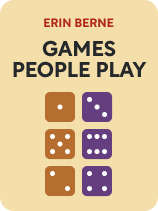

This article is an excerpt from the Shortform book guide to "Games People Play" by Eric Berne. Shortform has the world's best summaries and analyses of books you should be reading.
Like this article? Sign up for a free trial here .
What is Transactional Analysis? Why do humans crave recognition? What are the three ego states?
Transactional Analysis is a psychoanalytic theory and a method of analyzing social interactions. At its heart is the concept of the three ego states: the adult, the child, and the parent.
Keep reading to learn about the Transactional Analysis theory and how to use it to analyze interactions.
The Theory of Transactional Analysis
What is Transactional Analysis?
Transactional Analysis begins with the idea that humans need consistent recognition from one another. Berne called this “stroking,” and it stems from the fact that infants will die without literal stroking. By adulthood, though, we’ve learned to make do with more symbolic contact, or recognition.
Our need for recognition is analogous to hunger—if you don’t “feed” it, your physical, mental, and emotional health will decline. Berne cites one study showing that prisoners in solitary confinement develop psychoses and a second that used sensory deprivation to induce temporary psychosis in a lab setting. In other words, lack of social contact leads to psychological starvation.
In order to stave off that starvation, Berne argues, we unconsciously build our days around social interaction. By doing this we help each other gain the recognition we need to stay healthy.
(Shortform note: While we need social recognition to remain healthy, Berne seems to say that all social interaction happens because we need strokes. But this perspective reduces subjective experience to mere biological drives. Applying Berne’s logic to regular hunger, he might say that we eat because we’d die otherwise. But it’s unlikely this is the widespread rationale for eating—and equally incomplete to suggest that we interact solely because we need to survive.)
Exchanges, Sequences, and Ego States
Berne then argues that we can break social interaction down into discrete chunks, like the bars of a piece of sheet music. One chunk is one exchange, a back-and-forth between two individuals.
When you greet your friend—“Hey there! / G’morning!”—that’s one exchange. If you keep chatting, each back-and-forth is another exchange. This is our primary way of giving social recognition.
(Shortform note: Berne doesn’t provide any concrete evidence for the existence of exchanges (he terms them “transactions”). With this in mind, it’s more useful to think of T.A. as a set of mental models than verified truth. Concepts like “strokes” and “transactions” help to make sense of social interaction, even if they aren’t “real” per se. They make up a mental framework, a set of tools, similar to the way concepts like perspective, line, and composition help you to interpret drawings and paintings.)
You and your friend’s exchanges change with your states of mind. Berne proposed that three states of mind, or “ego states,” compose the human personality: adult, child, and parent.
- The adult is your rational self. It comes online to handle complex decision-making and other significant calculations and also handles mature adult behavior.
- The child is the source of spontaneous emotions, developing out of early childhood experiences. It stores and plays back significant emotional associations: If you were bullied as a kid, your response to that intense emotional experience is deeply embedded in your personality.
- The parent is all about value judgments and tradition. Everything you inherit from your family about the right and wrong ways to act, think, and feel becomes your parent state—and you’ll pass it on too.
(Shortform note: Berne’s “ego states” have some parallels with Freud’s model of the psyche. Roughly, the child maps to the Id (impulses and unconscious energies), the adult maps to the Ego (rational calculation and decision-making), and the parent maps to the Superego (handling moral judgment and values). But they also differ—for example, Berne doesn’t attribute all motivation to the libido, Freud’s idea of a psycho-sexual energy that supposedly drives all behavior.)
You’ve probably made some silly mistake before and had a parent or partner reprimand you. According to T.A., they’re talking down to you from their parent state, scolding the child state in you. This would likely cause a child-state reaction from you: When we get treated like children, it “energizes” the corresponding patterns in the brain, according to Berne.
Exchanges follow one-to-the-next like links in a chain. So long as they remain reciprocal, the participants’ mind states are in balance (adult to adult, child to child, and so on). However, Berne says, if one participant breaks that balance by, for example, behaving childishly when spoken to from the adult state, that’s a disrupted exchange.
(Shortform note: Berne’s notion of reciprocal versus disrupted exchanges is a useful way to explain the psychological level of abrupt communication breakdown. To build on this, also consider the perceptual level: Much miscommunication occurs because the receiver of a message interprets it differently from how the sender intended. Misinterpretation often accompanies emotional tension, like anger or defensiveness—states characteristic of a disrupted child or parent state. Berne doesn’t provide a clear way to resolve a communication breakdown, but in The Four Agreements, Don Miguel Ruiz offers two principles that can help: Be impeccable with your word, saying nothing malicious or untrue, and make no assumptions, so that you voice your own confusions to maintain clear, reciprocal exchange.)
Finally, there are deceptive exchanges, where you say one thing, but (unconsciously) mean another. These operate on two levels: on the surface level you might say, “I can’t believe you’d treat me like this!” and on the psychological level you mean, “I need to offload my stress onto you.” Berne contends that these exchanges form the basis for games, which are a fundamentally deceitful form of interaction.
| Three Elements of a Speech Act Linguist Deborah Tannen offers a three-fold model of communication that’s somewhat similar to Berne’s. Say your partner just dropped a full dinner plate on the floor, and you say “Holy crap, why the heck did you do that?” This involves: -The explicit content: What caused you to drop the plate? -The emotional subtext: Anger and blame cast onto your partner -An implicit judgment: You’re a dumb klutz and I, having not dropped anything, get to judge your competence. We’re very sensitive to the second and third elements, and they’re usually what we’ll respond to. This is similar to Berne’s model, where the players are really communicating through the game’s subtext. |
In T.A., chains of exchanges make up the various forms of interaction. For example, you could break down a dinner date into each back-and-forth, and look at how the participants’ mind states interacted. Noting which states they exchange from helps you make sense of the interaction: whether they’re in balance, whether they’re playing games, or whether there are disruptive exchanges going on.

———End of Preview———
Like what you just read? Read the rest of the world's best book summary and analysis of Eric Berne's "Games People Play" at Shortform .
Here's what you'll find in our full Games People Play summary :
- The many ways that we relate to one another through “games”
- Why you might be missing out on the fulfillment of game-free living
- How to identify and overcome unhealthy games






